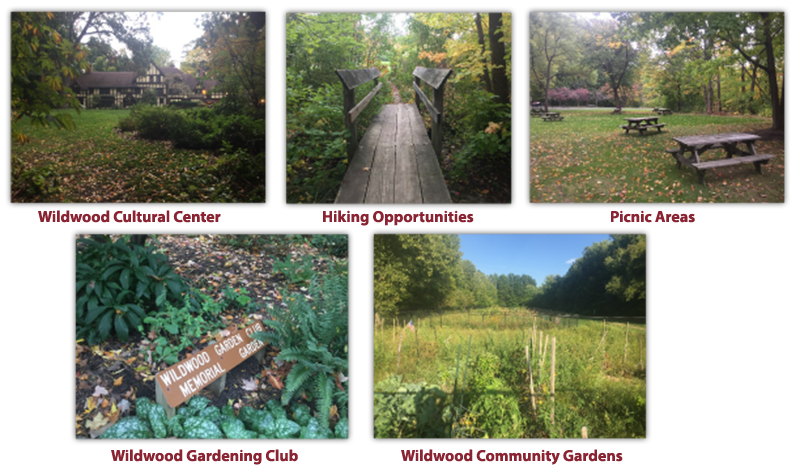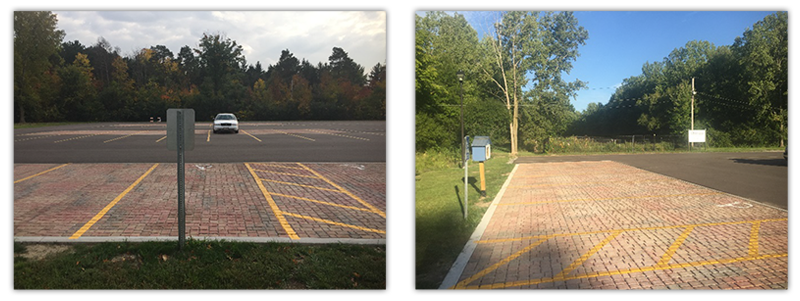In the spring of 2016, the City of Mentor retrofitted the parking lot of the Wildwood Cultural Park by installing 4,800 feet of permeable pavers and 2,200 square feet of bioretention to manage parking lot runoff and drainage from the pavers. An underdrain in the pavers is connected to the bioretention soil media in a treatment train to maximize stormwater treatment. This project is located at the headwaters of Marsh Creek, a direct tributary to Lake Erie, and infiltrative stormwater practices here reduce the amount of stormwater runoff and provide direct water quality benefits to Marsh Creek and the downstream Mentor Lagoons Nature Preserve and Mentor Marsh State Nature Preserve.
This project serves as a highly visible demonstration of green infrastructure practices. The Wildwood Cultural Center and Park is a popular park among Mentor residents and is used as a rental facility by private groups and a hub for arts and cultural events. The park is the home for many clubs, including the Wildwood Singers, The Wildwood Garden Club, the Creative Artists Association, the Wildwood Quilters Guild, and The Wildwood Basketry Guild. The park also features the Wildwood Community Garden, which is located immediately east of the parking lot.
Wildwood Cultural Center: A Well Loved Place

Stormwater Retrofit Project
Permeable Pavement

Three permeable pavement bays reduce runoff volume and pollution from the parking lot. Stormwater flows through spaces between the pavers and is filtered through layers or rock before it is slowly released into the groundwater or Marsh Creek.
Bioretention

Rainwater is taken up by deep-rooted plants and drains through sandy soil and gravel that filter out pollutants. The plants also serve as habitat and food for native pollinators.
The City of Mentor received a 319 grant from Ohio EPA to partially fund this stormwater retrofit demonstration project. Chagrin River Watershed Partners assisted the City of Mentor with project grant writing and administration.



